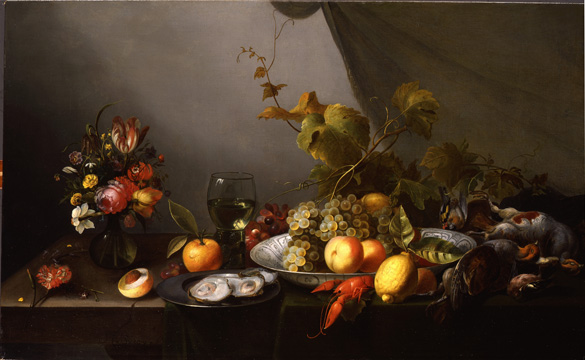Feasting in the Classroom

Two views on combining art, food, math, and history in the classroom. Teachers are invited to learn more -- and earn some CPDUs -- at a potluck-style workshop with artist Laura Letinsky on April 13.
By Lisa Davis
Smart Museum Manger of Tour and Teacher Initiatives
Suffice it to say Valerie Hardy made my dreams come true. Valerie is a sixth grade science/ social science teacher at Jane A. Neil Elementary on the South Side of Chicago, who has over 25 years of experience in education. I met her this summer while participating in a study group on literacy and science, supported by the Chicago Foundation for Education.
This past fall we worked together to create Healthy Habits (PDF) -- an extensive, arts-integrated teacher resource for the science curriculum. When I joined the education team at the Smart last year one of my goals was to begin developing a library of teacher resources based on objects in the Museum's collection that would connect across disciplines. Most specifically I wanted to tackle those not typically thought of in conjunction with an art museum, such as math and science. When I originally proposed the idea of someone from the group helping me to write a teacher resource, Valerie jumped at the opportunity to do what she does best.
Valerie designed her lesson around Still-Life With Fruit and Flowers On a Draped Ledge -- one of the more popular pieces with the students. I wrote a tour based on the objectives of her unit and added a visual arts lesson as well. We then presented the resource in its entirety at one of the Smart's workshops to twelve very excited, inspired teachers. Collaborating with Valerie was an exceptional experience for me and I can't wait for the next time!
By Valerie Hardy
Teacher, Jane A. Neil Elementary School
I wanted to integrate Art, Health, Math and History with my 6th grade students and Lisa helped me in my mission.
Our 6th grade class had been studying the components of a good diet by using the government new Balance Plate format created by the government and introduced by the First Lady, Mrs. Obama.
The students could envision what they needed to eat, but had questions:
- What was missing when they ate at the fast food restaurants? What was the calorie count?
- Were their eating habits different from those of the past? What foods were they eating; possible calories?
- What could cause a change in eating habits?
How did the students respond? Excited, happy, and wanting to continue with other projects based on a well concealed treasure, the Smart Museum of Art. Collaborating with Lisa was a breath of spring and I hope we can continue where we left off.
Top: Michiel Simons, Still Life with Fruit and Flowers on a Draped Ledge, n.d., Oil on canvas. Smart Museum of Art, The University of Chicago, Gift of John Bryan, 2007.137.